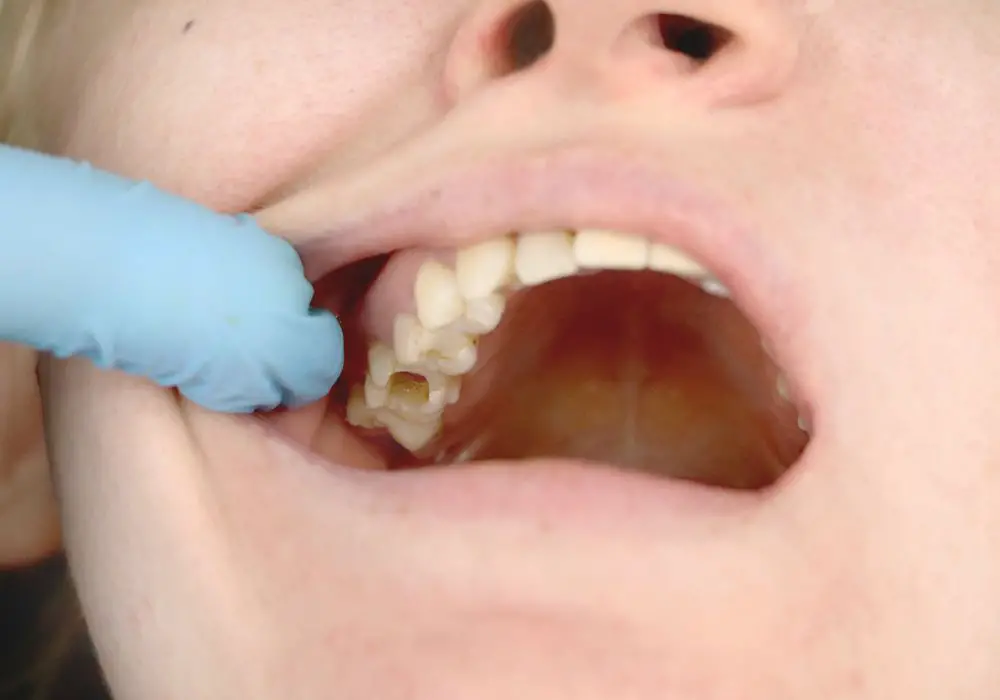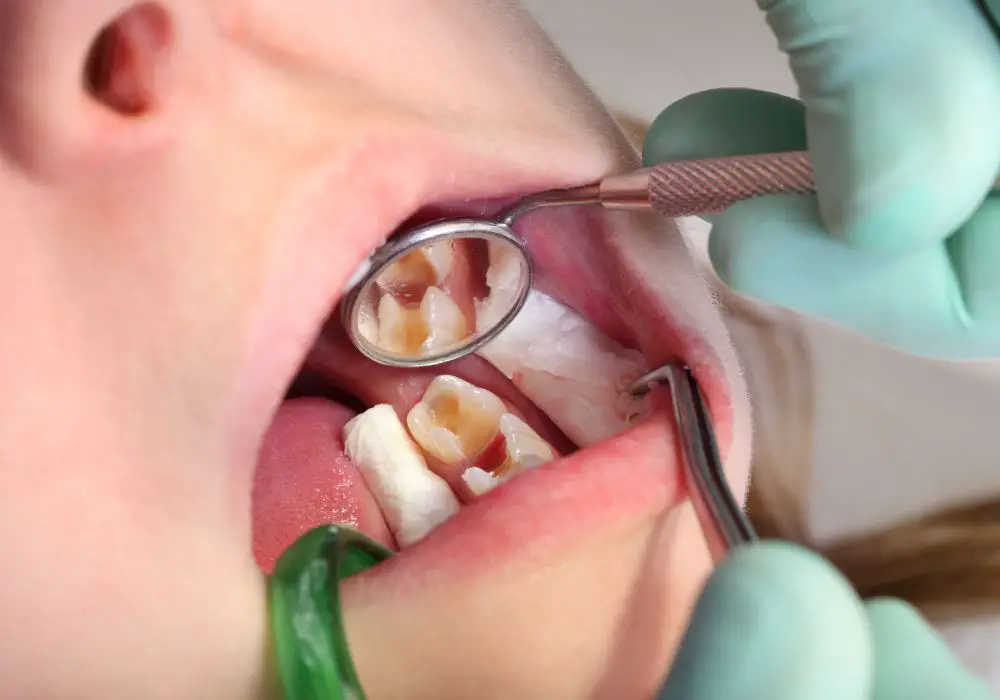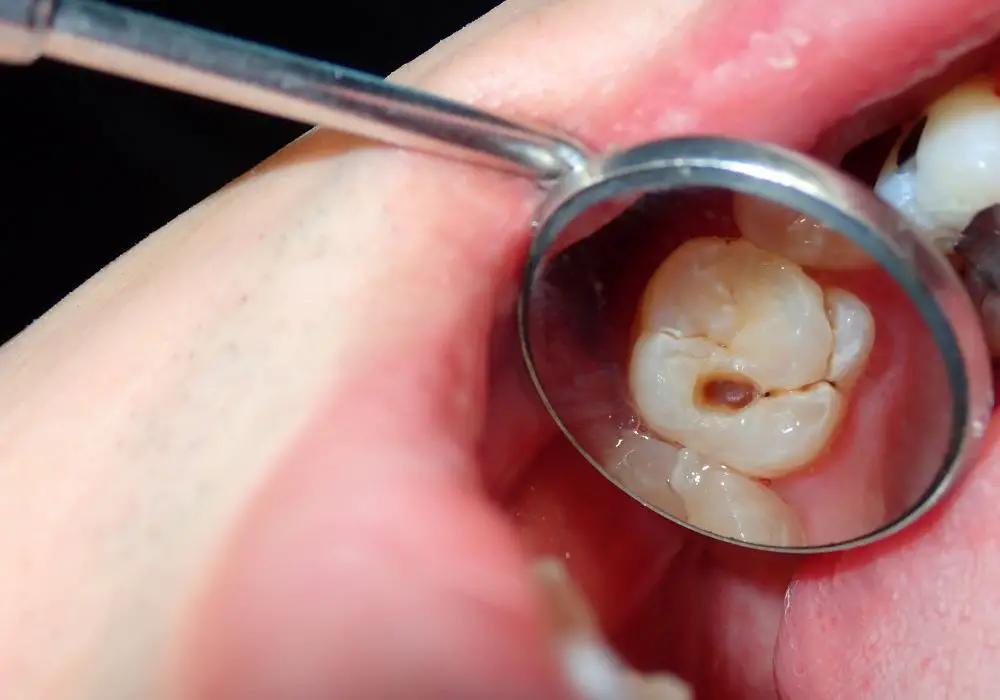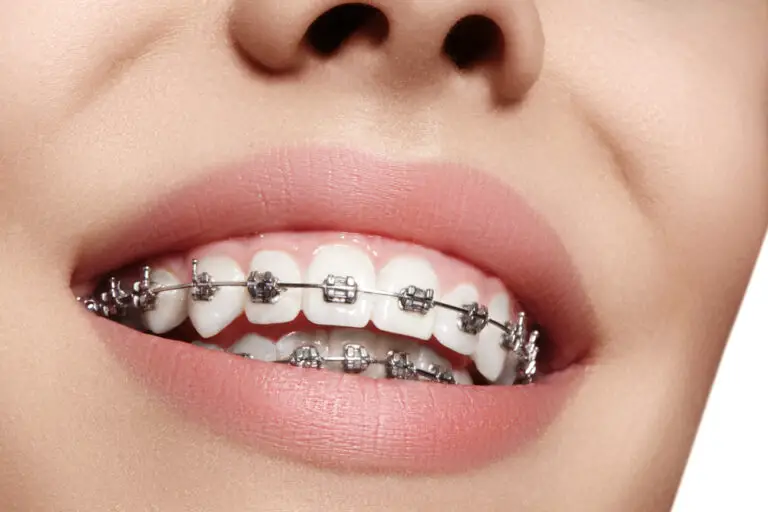Having a large hole or cavity in a tooth can be worrying. But even extensive decay and damage can often be repaired with modern dental treatments. This article explores what causes big cavities, the options for filling them, and important considerations to achieve successful, long-lasting restorations.
What Factors Cause Large Cavities to Develop?

A cavity forms when acids from plaque bacteria eat away at tooth enamel. Several factors allow small cavities to expand into large holes and defects:
Poor Oral Hygiene
When brushing and flossing are not done regularly and thoroughly, plaque is allowed to build up. The bacteria continue producing enamel-eating acid day after day, enabling decay to spread. Good hygiene is essential to controlling plaque and preventing progression of cavities.
High Sugar Diet
Frequent exposure to sugary foods and beverages feeds the plaque bacteria and fuels higher acid production. Sticky candies, soda, and sweet treats are especially problematic, as they coat teeth in sugar for prolonged periods. A sugary diet makes it easier for small cavities to grow larger.
Dry Mouth
Saliva helps neutralize cavity-causing acids and provides minerals to strengthen and remineralize enamel. People with chronic dry mouth often get cavities that rapidly expand due to the lack of saliva’s protective qualities. Conditions, medications, and aging can cause dry mouth.
Gaps in Dental Care
Skipping regular dental cleanings and check-ups allows decay to advance undetected. What starts as a tiny cavity is often left to spread, sometimes into the inner pulp. Seeing a dentist at least twice a year is key for early intervention before the damage gets too large.
Genetics and Tooth Anatomy
Some people are naturally prone to extensive decay due to tooth anatomy and the characteristics of their saliva and oral bacteria. Even with good hygiene, shallow tooth grooves, thin enamel, or low saliva flow can increase cavity risk.
Lifestyle Factors
Behaviors like smoking, excessive drinking, drug use, mouth breathing, and clenching/grinding accelerate wear and tear. The unhealthy oral environment contributes to rapid cavity growth.
The Progression of Cavity Decay
Cavities vary in size and severity. Without treatment, they inevitably expand over time:
Early Decay
The initial signs are tiny spots and discoloration where minerals have been lost from the enamel. At this stage, remineralization treatment can help strengthen enamel and reverse the early damage.
Moderate Decay
Enamel cavities have increased in size, becoming visible as holes or pitting. Decay now extends into the softer dentin layer under the enamel. Remineralization may still help at this stage.
Extensive Decay
The cavity has expanded significantly, often reaching deep into the inner dentin. There is typically sensitivity as the inner pulp nerve becomes irritated. Fillings or onlays are needed to restore the damaged tooth structure.
Severe Decay
Untreated decay reaches the inner pulp chamber. Major destruction causes spontaneous pain, abscesses, and infection. Root canals, crowns, or extraction may now be necessary options.
The rate of progression depends on many factors, but in general cavities enlarge over time without intervention. Catching decay early and promptly treating cavities is crucial.
Available Options for Filling Large Cavities

Several effective treatments exist for restoring even extensively damaged teeth:
Direct Composite Fillings
Composite resin is tooth-colored material commonly used for moderate cavities. It bonds directly into the cavity, hardening into a durable filling. For larger lesions, the filling is built up with layers until the hole is filled. Composites withstand biting forces, but removing more tooth structure is often needed.
Indirect Onlays or Inlays
These are custom fillings fabricated in a dental laboratory to precisely fit the tooth cavity. They are similar to direct fillings but can cover more surface area for larger defects. Less healthy tooth needs removal compared to direct fillings. Gold, porcelain, or indirect resin provides outstanding durability.
Dental Crowns
Crowns completely cover and cap an entire damaged tooth. Recommended for extensive decay, fractures, or patients who grind teeth. They protect what remains of the natural tooth while restoring form and function. Modern materials like ceramic, porcelain, and zirconia are strong, natural looking, and biocompatible.
Root Canal
If decay reaches the pulp, a root canal is done first to clear infection and prevent further damage. The inner tooth is sealed off before placing a restorative onlay, crown, or bridge. Saving the natural tooth structure through root canal treatment is preferable to extraction.
The dentist will discuss options to determine the optimal treatment based on the cavity size, location, budget, aesthetics, and other patient goals. Even very large cavities and defects can be successfully restored with today’s advanced techniques.
Long-Term Outcomes of Big Cavity Fillings

With proper execution and care, large fillings and restorations can last for many years. However, some considerations for long-term success include:
Robust Bonding
Etching the cavity walls prior to applying composite or cement ensures a strong adhesive bond. This prevents gaps that allow new decay. Using bonding agents is critical.
Precise Margins
Well-adapted filling margins don’t allow leakage of food debris or oral fluids into the inner tooth. Indirect or custom restorations fit very accurately for tight margins.
Occlusal Balance
The filled tooth should meet properly with the opposing teeth. Adjustments may be needed so biting forces distribute evenly and don’t crack the filling.
Oral Hygiene and Habits
Continuing good brushing, flossing, and diet habits protect the restoration. Stopping smoking also increases success rates. Regular dental visits help detect problems early.
Periodic Replacement
Even durable materials slowly wear over 5-15 years on average. Replacing old fillings before new decay forms around margins maintains tooth health.
Following dental recommendations for care and maintenance of the restoration is just as important as the filling procedure itself. With the right treatment and patient effort, even large cavities and defects can be successfully managed for lasting results.
Conclusion
Severe tooth decay and large cavities don’t automatically mean tooth loss is inevitable. Today’s dental treatments can restore even significantly damaged teeth to full function and aesthetics. Working closely with the dentist to determine the optimal filling approach based on individual circumstances helps ensure the best outcome. A restored tooth can then provide many more years of healthy service.






